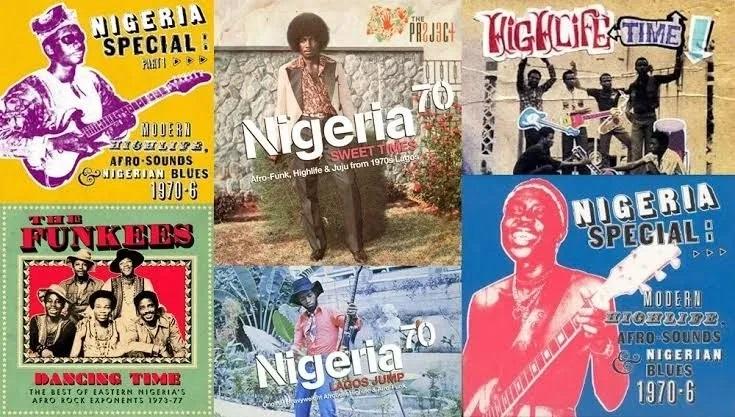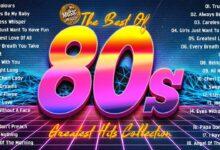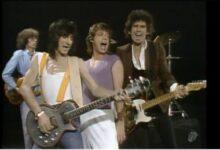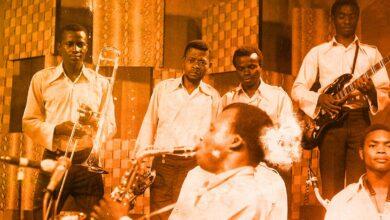
The Highlife Music History in Nigeria
The Highlife Music History in Nigeria: Highlife music holds a captivating place in Nigeria’s cultural heritage. Originating along the Ghanaian coast in the late 1800s, this rhythmic genre creatively fused African and Western instruments and melodies. Eventually spreading to Nigeria, highlife music enthralled audiences and became the nation’s first popular music style.Information Guide Nigeria
With its soulful vocals, multilayered rhythms, and brassy horns, highlife reflects a sonic mosaic. As urban dance bands electrified indigenous African music, they sculpted an iconic sound. Highlife evolved through decades of innovation, challenges, and musical blending. This rich history left an indelible imprint on Nigeria’s musical landscape.
👉 Relocate to Canada Today!
Live, Study and Work in Canada. No Payment is Required! Hurry Now click here to Apply >> Immigrate to CanadaFrom highlife’s golden era to its contemporary revival, the genre has showcased Nigeria’s talent for synthesizing global influences into something unique. By spotlighting this iconic style, we better understand Nigeria’s cultural soul. Highlife music’s story illustrates a nation actualizing its musical potential.Highlife Music History
The Highlife Music History in Nigeria
The Birth of Highlife Music
The story of highlife music begins towards the end of the 19th century in what was then the Gold Coast, now known as Ghana. As African traditional music collided with the brass band tradition brought by European missionaries and sailors, a new unique sound was born in the coastal cities of Ghana. This early form of highlife music was played primarily by regimental brass bands in Ghana’s coastal cities like Sekondi, Cape Coast and Accra.
Highlife pioneers like John Collins and his group the Gold Coast Aborigines were among the first to record this new music in the 1920s, combining instruments like pennywhistles, harmonicas and guitars with traditional African elements. As urbanization increased during the colonial period, highlife music flourished as the music of the local African aristocracy in Ghana’s dance halls and nightclubs.Top 15 Highly Regarded Naval Vessel
The term ‘highlife’ reflected this connection with local black high society at the time. The dance bands played a mix of marches, waltzes, swing, jive and various African styles fused together into something novel and modern. This early highlife was part of the broader cultural movement resisting colonial pressures to jettison African tradition.
Highlife bands at the time like Sam’s Trio, the Jazz Kings and the Accra Orchestra gave performances for elites in Accra, combining the storytelling and call-and-response musical structures of African music with the rhythmic complexity of jazz and the social swagger of American swing. Through 78 rpm records, highlife music spread beyond the Ghanaian coast, captivating listeners with its blend of African rhythms and western instrumentation.
Read Also: Top 13 Highlife Music Streaming Platforms in Nigeria
The Pioneers of Nigerian Highlife Music
By the 1930s and 40s, highlife music had adopted regional variations in Ghana, Sierra Leone and Nigeria. As migration increased between Ghana and Nigeria, highlife music flowed across borders and began putting down roots in Nigeria.The Future of Electric Vehicles in Nigeria
Early highlife bands emerged in Nigeria’s southern cities, fusing palm wine guitar rhythms from Igbo folk music with the Latin influences of Ghanaian highlife. Sir Warrior and the Oriental Brothers brought highlife into the mainstream in southeastern Nigeria in the 1950s, pioneering the use of xylophones and electric guitars .
👉 Relocate to Canada Today!
Live, Study and Work in Canada. No Payment is Required! Hurry Now click here to Apply >> Immigrate to CanadaBut it was the late great Dr. Sir Warrior Osita Osadebe that transformed Igbo folk music into a national highlife style in Nigeria. Osadebe fused Igbo narrative singing with fast-paced rhythms, eschewing western instruments for purely African ones like the ogene metal gong. His style inspired crowds to hit the dancefloor with its uptempo, energetic sound.
In the Yoruba southwest, influential acts like I.K. Dairo modernized the apala genre with highlife and jazz influences 8. Dairo brought Yoruba folk songs to national consciousness with his Blue Spots Band in the 1950s and 60s. Highlife also became linked with Nigeria’s independence movement, as artists like Cardinal Rex Lawson connected highlife with political activism.Dollar to Naira
The big bands of Bobby Benson introduced a more Caribbean sound, while artists like Victor Olaiya and Roy Chicago fused highlife with jump blues and jazz 10. Olaiya’s Cool Cats band brought a modern electric sound that filled dancefloors across the country. These pioneers helped highlife music gain widespread appeal across Nigeria in the 1950s and 60s.
Read Also: Top 15 Classic Highlife Music in Nigeria
The Evolution and Challenges of Highlife Music
Highlife music continuously evolved from its early days, incorporating diverse genres and keeping up with trends. Cuban music became a major influence during World War II when sailors returned with Latin records. Highlife bands embraced the mambo, rumba, and cha-cha-cha, adding a lilting Caribbean flavor.
As American swing and jazz reached Nigeria’s shores, big bands amplified their brass sections. Tunde Nightingale pioneered the highlife twist style, adding rock n’ roll, soul and funk elements in the 60s and 70s. By bringing in Western instruments like keyboards and guitars, highlife bands appealed to younger crowds.JAMB Result
But by the late 60s, highlife music faced a challenge as funk, soul, and eventually Afrobeat emerged, shifting popular tastes. With the influx of rock groups like The Hykkers and The Funkees, highlife struggled to retain its dominance. As modern recording technology developed, highlife seemed old-fashioned compared to trendy genres.
Military regimes between the 1960s-80s also stifled expression, impacting highlife musicians adverse to censorship. Highlife music declined across radio, television and pop culture through the 70s. While it remained popular in eastern Nigeria, elsewhere it was seen as an outdated relic. Highlife bands disbanded or left for Europe and America where their music was still appreciated.NYSC Portal
For a genre that once represented Nigeria’s spirit and optimism, it seemed highlife music was falling into oblivion. The question was whether it could successfully transition into the modern era.
Read Also: Top 15 Highlife Songs of all Time in Nigeria
Resurgence – The Rebirth of Highlife Music
Rather than fading into obscurity, highlife music launched an impressive comeback starting in the 1980s. Several factors allowed highlife to experience a renaissance on the Nigerian music scene.
The formation of the Performing Musicians Association of Nigeria in 1984 helped revive interest in traditional genres. PMAN established awards, collaborations and educational programs to promote Nigerian music. Highlife veterans teamed up with younger artists on ambitious albums and international tours.Good Morning my love Messages
Politically, the return to democracy after military rule created a new openness for artistic expression. Highlife music was no longer suppressed on radio and TV. As music stratified across class divides during the 90s, highlife regained its broad appeal.
A new generation was also drawn to highlife music as a way of rediscovering Nigeria’s roots in a rapidly globalizing world. College kids formed highlife bands, researchers began documenting its history, and highlife dance nights popped up in cities across Nigeria.
Oliver De Coque became the face of highlife’s renaissance, returning to gramophone-era instrumentation while modernizing the rhythm into a faster-paced dance style he coined “Ogene”. De Coque would release over 73 records revitalizing enthusiasm for highlife music.Romantic Love Messages for her
Highlife’ fluidity enabled it to reshape itself for new ears. Artists like Bright Chimezie combined it with Afrobeat and funk. Others like Obiba infused it with reggae and Makossa. Soon highlife vibrated across dancefloors once again. Through persistence and reinvention, highlife music had fought its way back into Nigerian popular culture.
Read Also: Top 15 Highlife Music Legends in Nigeria
Preserving Highlife Music for Future Generations
Amidst its revival, efforts accelerated to preserve highlife music’s legacy and pass it to younger generations. In the late 90s, Nigerian composers formed the Pan African Society of Musical Arts Education (PASMAE) to promote instruction in indigenous music. PASMAE integrated highlife into school curricula so students could experience Nigeria’s iconic sound.
Musicians and historians assembled archives of rare highlife recordings and images to preserve them digitally. They organized exhibitions showcasing highlife pioneers and evolution. Radio stations dedicated broadcasts focused on its roots. Highlife aficionados formed clubs to enjoy vintage vinyl recordings.
To commemorate Highlife’s centenary in Ghana, massive heritage projects were undertaken, often with Nigerian involvement. Books, films, and albums told highlife’s story while festivals brought legends to the stage. Nigeria declared 2001 the ‘Year of Highlife Music’ with lavish concerts and media tributes.
Despite setbacks and skepticism, these efforts highlighted the resilience of highlife music. Nigeria’s musical forbearer was very much alive if nurtured and allowed to thrive. Through a pan-African spirit of preservation, highlife music entered the 21st Century poised for greater recognition.JAMB Portal
Read Also: Top 15 Highlife Guitar Music in Nigeria
The Enduring Influence of Highlife Music
Highlife music cast a long shadow over Nigeria’s musical landscape, influencing numerous artists and genres that emerged after its golden era. Highlife rhythms and melodies can be heard in many contemporary styles.
Artists like King Sunny Ade and Ebenezer Obey fused highlife with juju music, laying the foundation for jùjú music’s popularity. Both juju and fuji music incorporated the horns, guitars, and percussions of early highlife bands. Afrobeat legend Fela Kuti featured highlife elements in early recordings before developing his signature sound.
Beyond Nigeria, highlife impacted global music as well. Early “guitar bands” in Congo and Tanzania mixed highlife with soukous and benga zouk styles. Highlife recordings also spread via Ghanaian and Nigerian diasporas in Europe, shaping early Afro-Caribbean genres like calypso, soca, and zouk.
As interest grows in World Music, many global artists are now turning to Highlife for inspiration. Its core rhythms and themes continue manifesting in jazz, R&B, rock, and even electronic music. From Lagos to London, Kingston to Chicago, highlife lives on as a wellspring of musical possibilities.
Like Nigeria itself, highlife music transitioned through periods of splendor, tumult, dormancy, and rebirth. Yet its appeal remains universal. In telling stories of African identity, aspiration, strength, and struggle, highlife music echoes through the ages.
Read Also: Top 15 Highlife Music Festivals in Nigeria
Conclusion
Highlife music has woven itself into the cultural fabric of Nigeria over the past century, blossoming from humble beginnings along the Ghanaian coast into a beloved genre. Early bands fused African rhythms with Western brass and strings, pioneering a hybrid sound that resonated with Nigeria’s musical identity.
Iconic artists and bands popularized distinct regional highlife styles, from Osita Osadebe’s Igbo folk-infused ogene to the big bands of Lagos and juju-highlife fusion. Highlife music evolved across decades, facing challenges but ultimately finding new life through reinvention. Its persistence is a testament to the genre’s adaptability and profound appeal.
While highlife may not dominate Nigerian airwaves like before, its legacy continues through preservation initiatives, artist collaborations, and enduring influence on contemporary music. Highlife taught Nigeria how to fall in love with its own sound. By celebrating this history, new generations may discover the magic that makes highlife music forever shine.
Check JAMB Result
Check and Confirm: How much is Dollar to Naira







